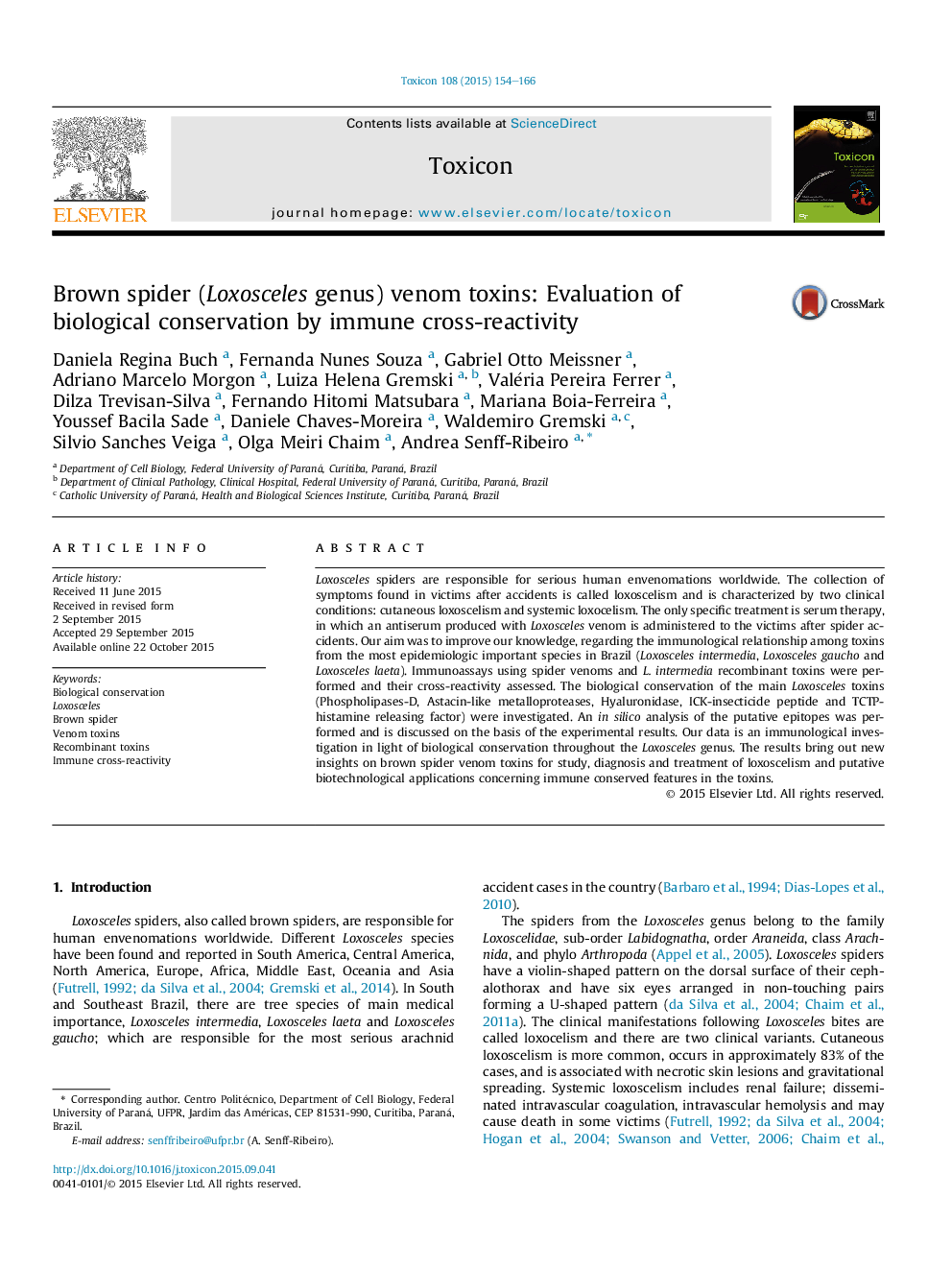| Article ID | Journal | Published Year | Pages | File Type |
|---|---|---|---|---|
| 8395195 | Toxicon | 2015 | 13 Pages |
Abstract
Loxosceles spiders are responsible for serious human envenomations worldwide. The collection of symptoms found in victims after accidents is called loxoscelism and is characterized by two clinical conditions: cutaneous loxoscelism and systemic loxocelism. The only specific treatment is serum therapy, in which an antiserum produced with Loxosceles venom is administered to the victims after spider accidents. Our aim was to improve our knowledge, regarding the immunological relationship among toxins from the most epidemiologic important species in Brazil (Loxosceles intermedia, Loxosceles gaucho and Loxosceles laeta). Immunoassays using spider venoms and L. intermedia recombinant toxins were performed and their cross-reactivity assessed. The biological conservation of the main Loxosceles toxins (Phospholipases-D, Astacin-like metalloproteases, Hyaluronidase, ICK-insecticide peptide and TCTP-histamine releasing factor) were investigated. An in silico analysis of the putative epitopes was performed and is discussed on the basis of the experimental results. Our data is an immunological investigation in light of biological conservation throughout the Loxosceles genus. The results bring out new insights on brown spider venom toxins for study, diagnosis and treatment of loxoscelism and putative biotechnological applications concerning immune conserved features in the toxins.
Related Topics
Life Sciences
Biochemistry, Genetics and Molecular Biology
Biochemistry, Genetics and Molecular Biology (General)
Authors
Daniela Regina Buch, Fernanda Nunes Souza, Gabriel Otto Meissner, Adriano Marcelo Morgon, Luiza Helena Gremski, Valéria Pereira Ferrer, Dilza Trevisan-Silva, Fernando Hitomi Matsubara, Mariana Boia-Ferreira, Youssef Bacila Sade, Daniele Chaves-Moreira,
